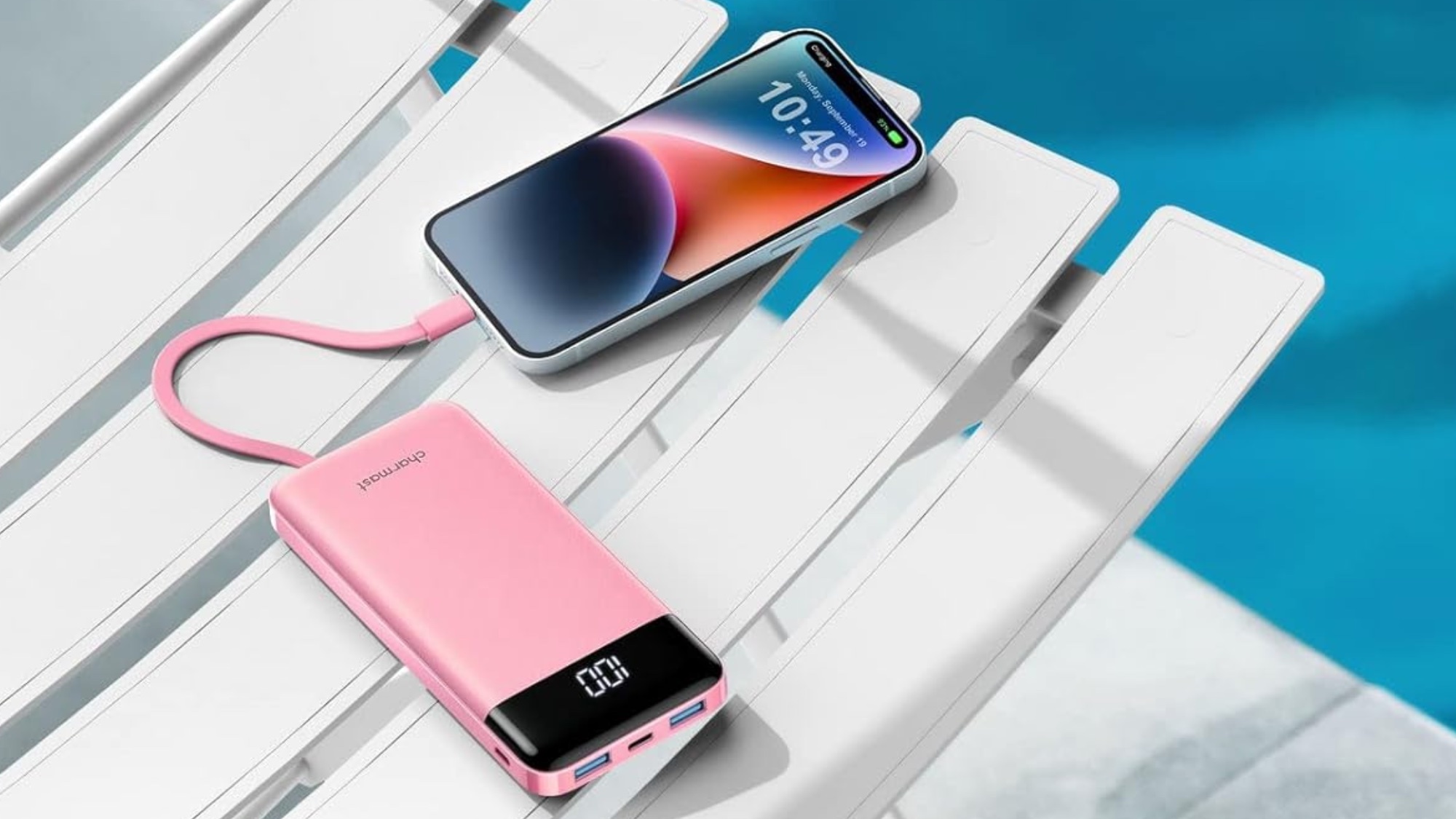Best GPS tracker for kids in 2025
Our pick for the best GPS tracker for kids can help pinpoint a lost child’s location
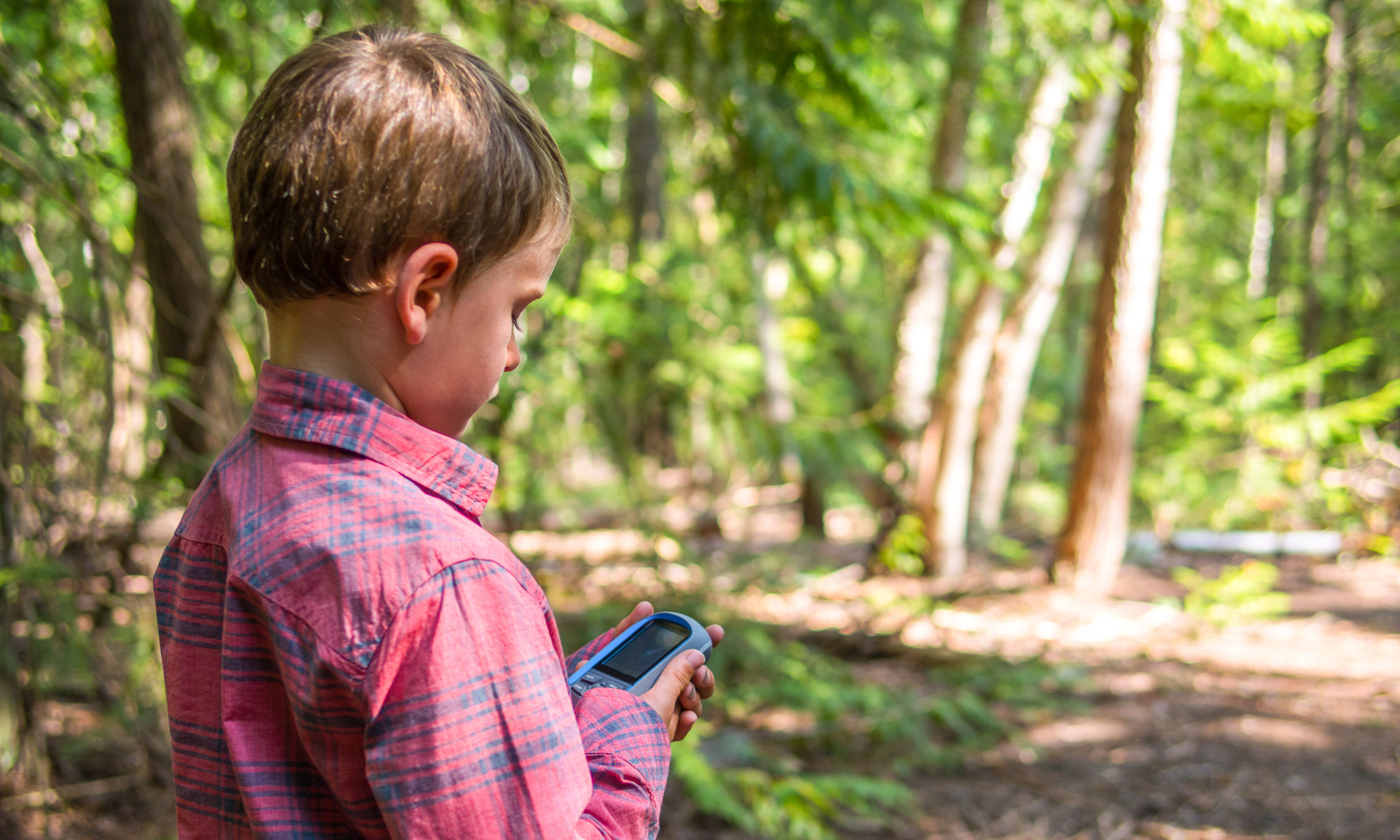
It's a stressful job being a parent, but having one of the best GPS trackers for kids can at least give you a quick answer to a question that parents frequently ask: where is my child right now?
A GPS tracker can beam location data straight to your phone, letting you know at a glance if your child is where they're supposed to be or how to find them if you've lost sight of them in a crowd. The best trackers also offer two-way communication features so you and your child can stay in touch when you need to reach each other.
When I look for the best GPS trackers, I'm drawn to devices that are easy to operate, especially for younger kids. Since many of these trackers double as wrist watches or wearable bands, we want to make sure that they're comfortable to wear and can stand up to the punishment that only kids can deliver. That also goes for trackers that clip onto a backpack or slip into a pocket.
In addition to considering the kind of information each tracker provides, I also want to know whether a device can let kids send out alerts to their parents or other care-givers if they run into trouble. And then there's the ongoing cost of kid trackers — besides what you pay for the tracker itself, you're usually on the hook for a monthly fee for network connectivity.
My best GPS tracker picks focus on kid-specific products since they're designed specifically for children, making them easy to use in an emergency. For that reason, I'd steer you away from using Apple's AirTag or any of the other top key finders to track anything other than objects. True, some of those devices do indicate that you can use them to track pets, but they rely on Bluetooth connectivity, which lacks the range of a dedicated GPS tracker. (Apple also explicitly recommends against using the AirTag as a people tracker, for what it's worth.)
We're talking about trackers for kids here, but these devices also double as a way to keep tabs on older relatives who may require some extra attention. If you do plan on using these devices for an aging parent, just make sure to check if there's a more age-appropriate design available. (In many cases, there will be.)
The Quick List
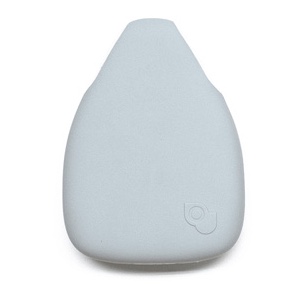
Best overall GPS tracker for kids
We like the jiobit tracker because it's unobtrusive, attaching easily to a backpack or jacket. It's got a durable design, too, with good tracking features.
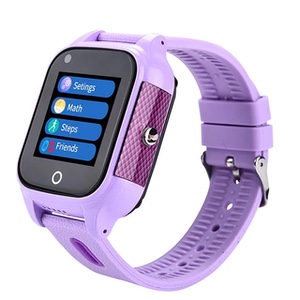
Best GPS watch for kids
If you prefer a wristwatch design, Lil Tracker is the one to get. You'll appreciate its two-way calling features while kids will like the comfortable fit.
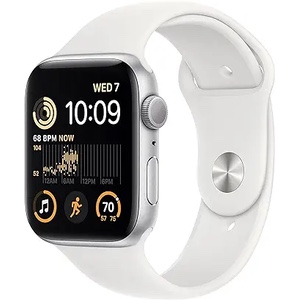
Best for older kids
It's not designed as a tracker, but Apple's entry-level smartwatch does have tracking features through the Family Setup feature.
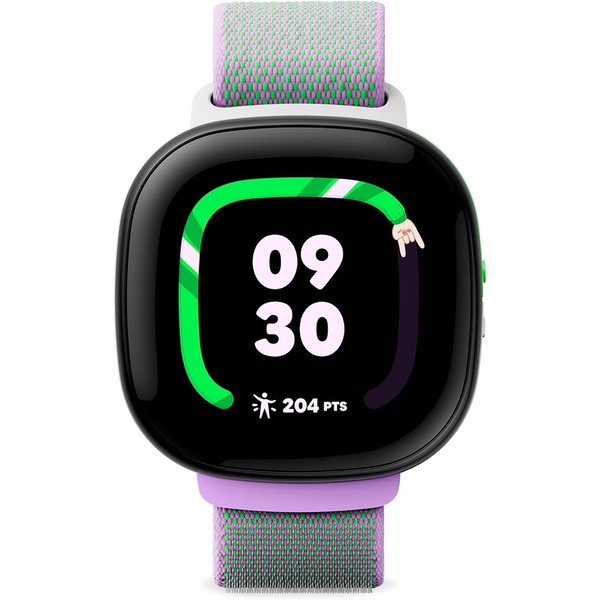
Location-sharing fitness tracker
The Fitbit Ace LTE is built to track kids' fitness, but it has location tracking features that should appeal to parents. Kids can also call and text using this wrist-worn tracker.

My name is Philip Michaels, and I'm normally handling our mobile coverage here at Tom's Guide. But I also oversee our coverage of GPS trackers for kids, working with reviewers and other editors to go over testing and hunt down potential devices to review. I'm also a parent myself, and when my daughter was a little bit younger, I used trackers to make sure she got to and from school OK — including relying extensively on one of the picks below.
Best GPS tracker for kids overall
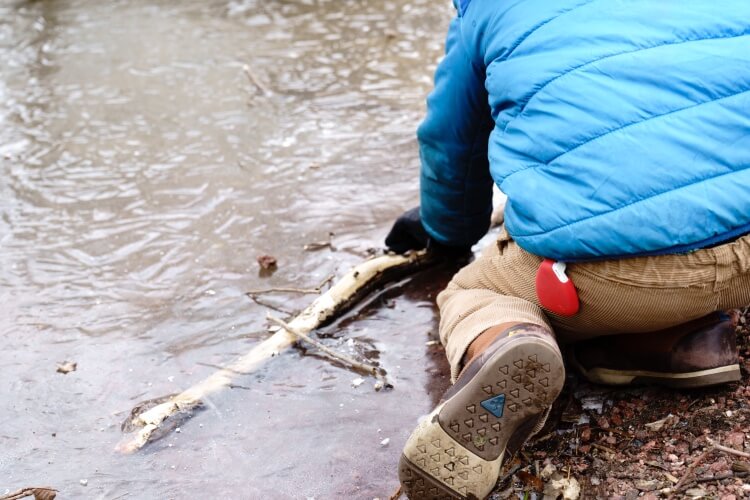
1. Jiobit
Our expert review:
Specifications
Reasons to buy
Reasons to avoid
Our pick for the best GPS tracker for keeping tabs on kids, pets and older adults has been the Jiobit, which is small and light (2 x 1.5 x 0.5 inches, 0.6 ounces). A loop lets you attach the tracker to a backpack, shoe, belt loop, keychain or necklace, and we found we only had to charge it every five days or so.
Since our original Jiobit review, the makers of this kid tracker have updated it with a better antenna, longer battery life and faster connectivity. The Jiobit Smart Tag has a list price for $149, though we've seen it discounted to $129.
With no screen, microphone or speaker, the Jiobit feels very durable. It's shock-resistant and waterproof with an IPX8 rating — when we tested it with a 6-year-old, we found they wouldn't be able to damage it without a dedicated, sustained effort. We threw it on the ground, stepped on it and left it on the driveway during a rain shower, and it kept working just fine.

The best part for parents is how the Jiobit app for iOS and Android lets you know not only where your child is but also who she's with. If your child has multiple caregivers and they all use the Jiobit app, the tracker and the caregiver's phone will connect with Bluetooth whenever they're in range. That way, you can see in the app that your son left school at 3 p.m., accompanied by his dad, or his stepmom, or his babysitter, or whoever was supposed to pick him up.
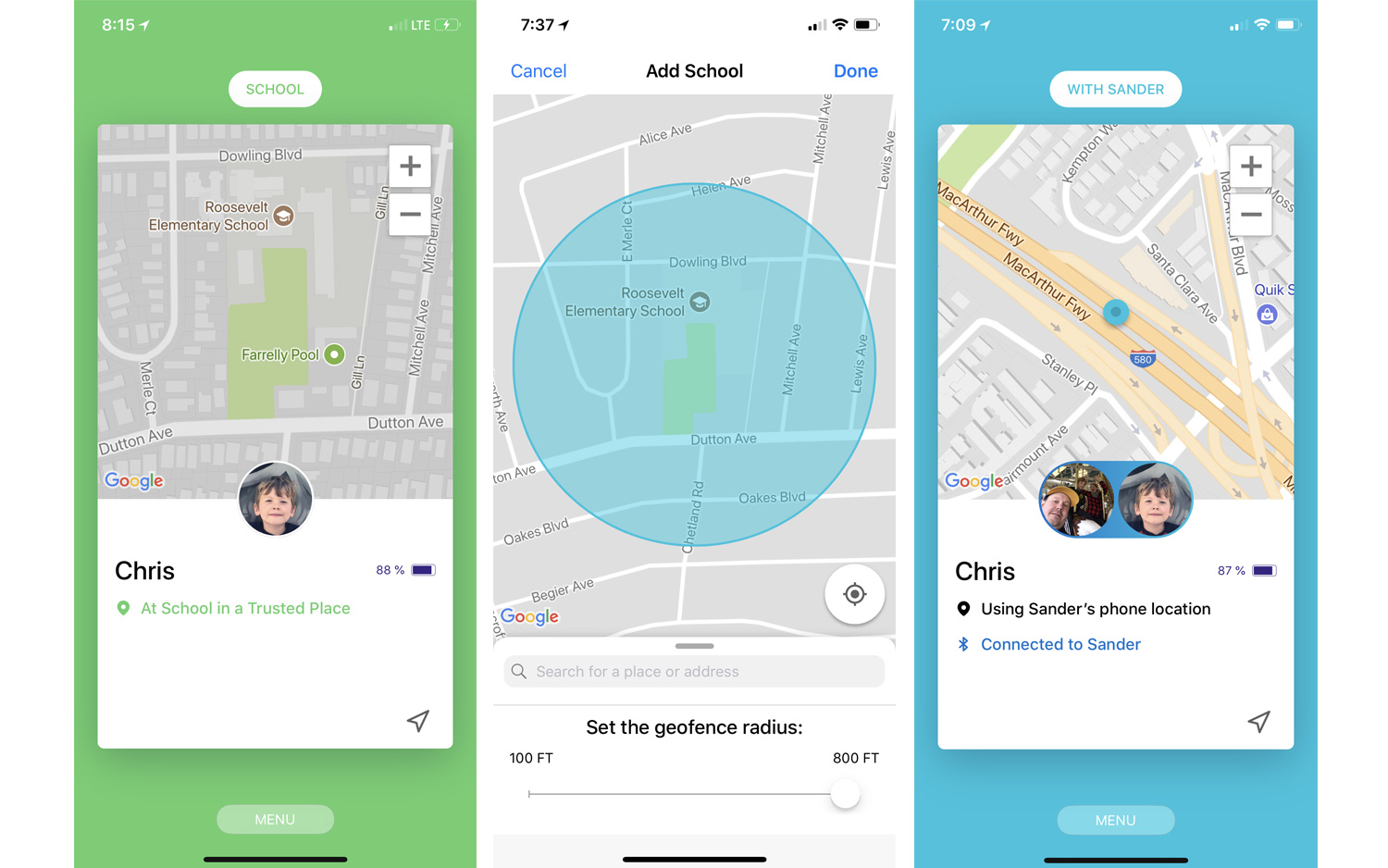
Even better, you aren't notified when your child arrives at or leaves a trusted place with you. After all, you don't need a push notification to tell you that you just picked up your kid from school. But you do want a notification if she leaves school alone or with someone else. Trusted Places are easy to set up in the app, and you can choose to be notified when the tracker enters, leaves or both.
You add other caregivers to your Care Team by phone number. They'll receive a link over SMS (text) to download the Jiobit app, and when they set up an account, they enter their own phone number. Care Team members can choose to be notified when the Jiobit enters and leaves the trusted places you've set up, and they can see the Jiobit on the map and which caregiver is in range. They just can't set up additional trusted places or change any of the Jiobit's settings.
In our testing, the Jiobit got a good signal indoors and outdoors — the app always found it within a second or two of launching. Tapping the top of the smartphone screen lets you enter tracking mode, where the location updates on the map as the tracker moves, leaving a track between points. Live tracking for long periods will wear down the Jiobit's battery, so the app asks you after 2 minutes if you want to keep tracking or go back to the map, which still refreshes every few seconds if the tracker is moving, just without creating a trail.
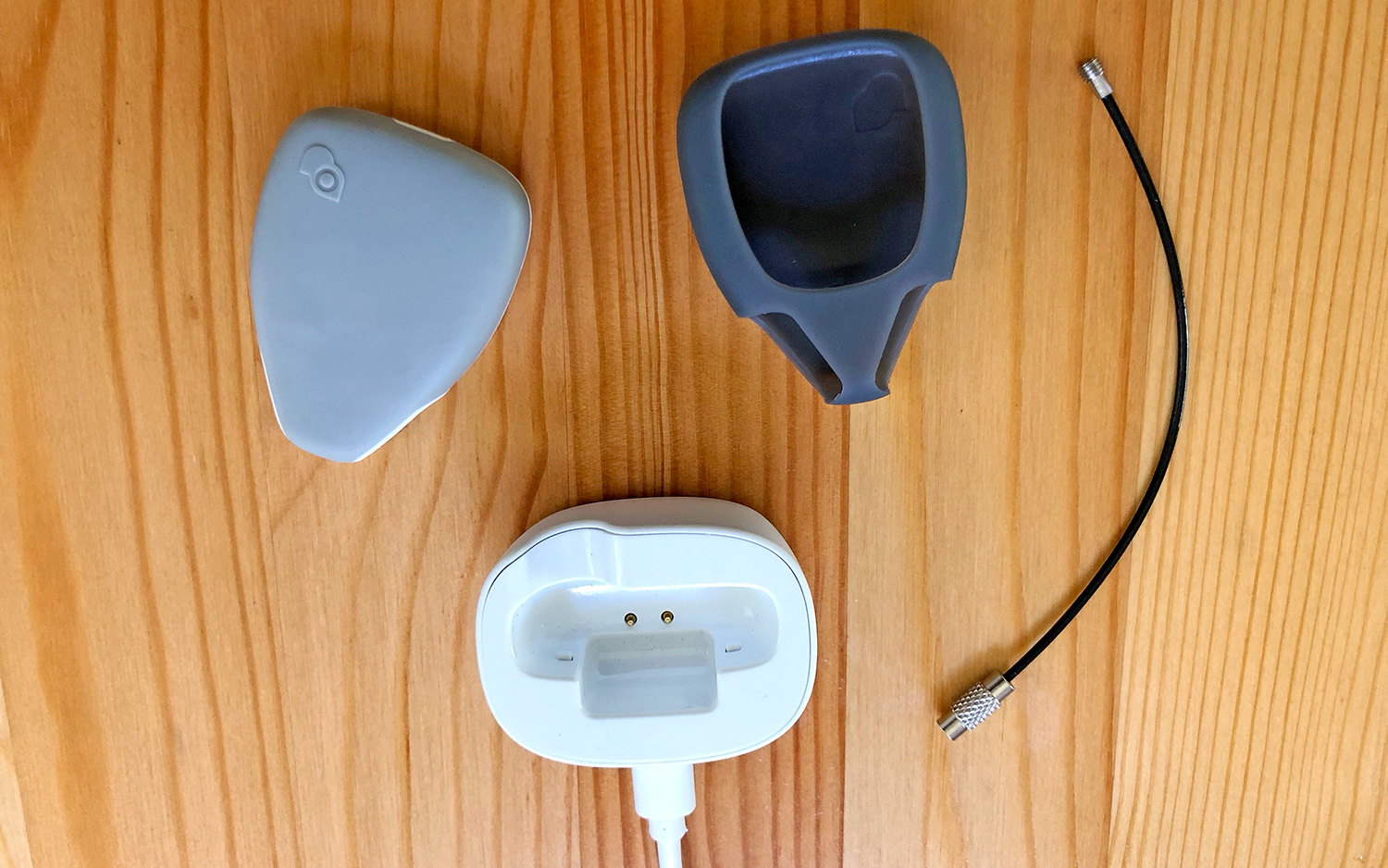
Jiobit's updates have addressed some of the complaints we had in our original review. The app now offers a history feature to show you were the tracker — and the person carrying it — have been during the day. There's now an SOS button to press in emergencies, too.
If you're trying to locate the Jiobit, there's no augmented-reality view to guide you to its exact spot. But when you're paired by Bluetooth, you'll notice a little bar in the app that connects your photo, representing your phone, to your child's photo, representing the Jiobit. That bar grows longer or shorter based on how close you are, which can help you home in on the device. Then, you can tap the little bell icon, and the Jiobit will make a noise and flash its LED, in case you've lost it under the bed, for example.
On top of the Jiobit's $149 cost, you'll need to subscribe to a service contract that costs $16.99 per month. Paying for a year of service cuts your monthly rate substantially to $8.33.The tracker uses AT&T's and T-Mobile's networks to send the GPS data.
The original Jiobit was the best GPS tracker for kids, with a long battery life and an easy-to-use app, and the improvements in subsequent versions sound promising. Right now, the biggest problem with Jiobit seems to be getting your hands on one, as the device is currently listed as out-of-stock at most retailers, with no word on when it will return.
Best GPS watch for kids
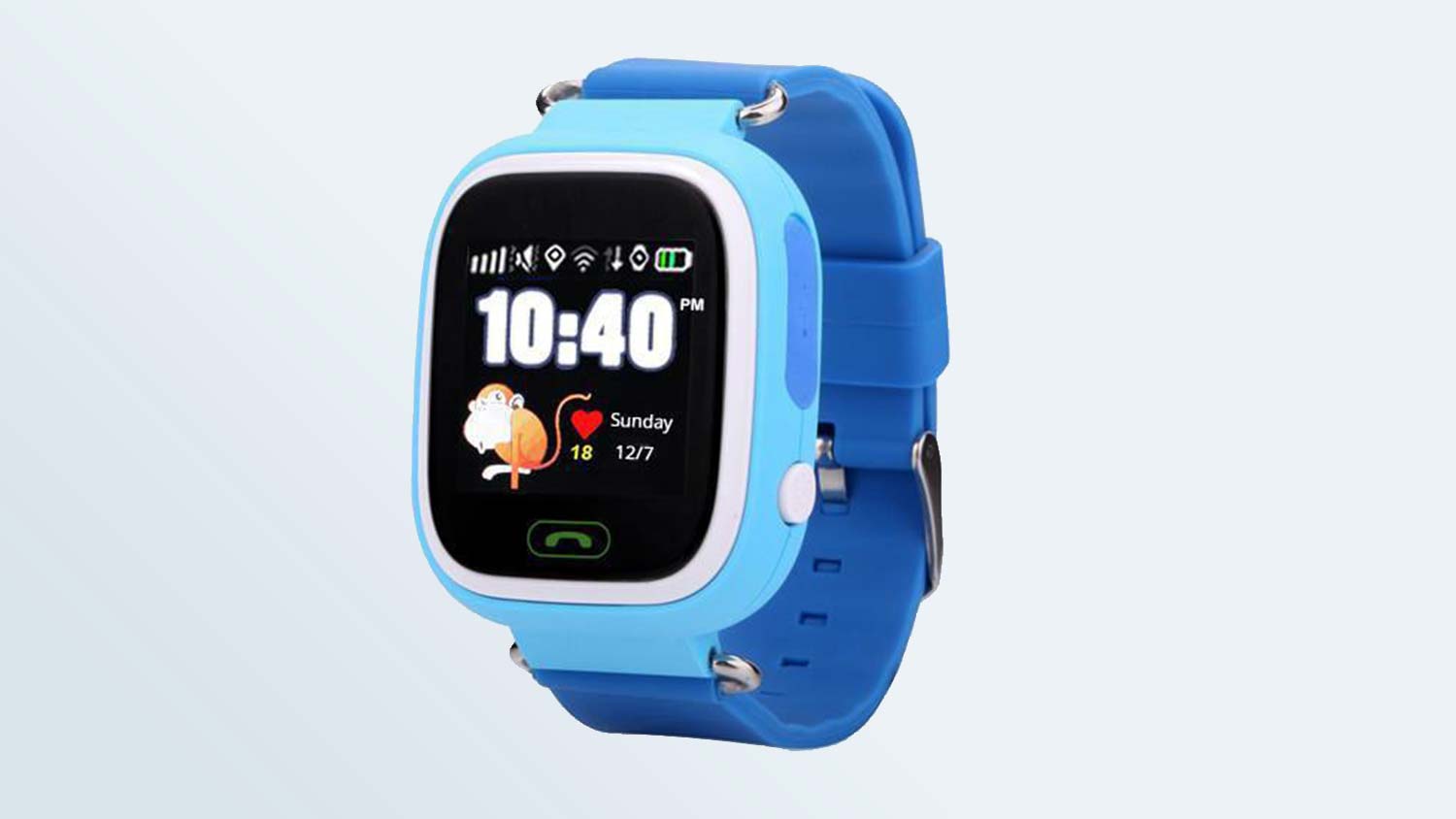
2. Lil Tracker 2G Kids' GPS Tracker Watch
Our expert review:
Specifications
Reasons to buy
Reasons to avoid
Before we delve into the Lil Tracker's merits as one of the best GPS tracker for kids, let's talk availability. The Lil Tracker can be hard to find on online retailer sites like Amazon, but you can always buy directly from Lil Tracker itself if you decide that this is the GPS tracker for you. We reviewed the 2G version of the Lil Tracker, but there's now a 4G version available for $135.
No matter the version, the Lil Tracker is a full-featured GPS watch aimed at kids, but it may be a little too full-featured once you get a look at the app. You have to provide your own SIM card (more on that in a bit), but that enables GPS tracking, as well as two-way voice calls, texts and one-way calls in which you can just listen to what's going on at your child's location.
Weighing only 1.5 ounces, the watch is light, with a comfortable silicone band and a metal buckle. It has a 1.2-inch color touch screen with a friendly animated monkey that accompanies the time display. It's rugged with an iP67 water resistance. Battery life depends on how much you use the device, of course, but the Lil Tracker is designed to last 12 hours; our tester had to recharge it every night.
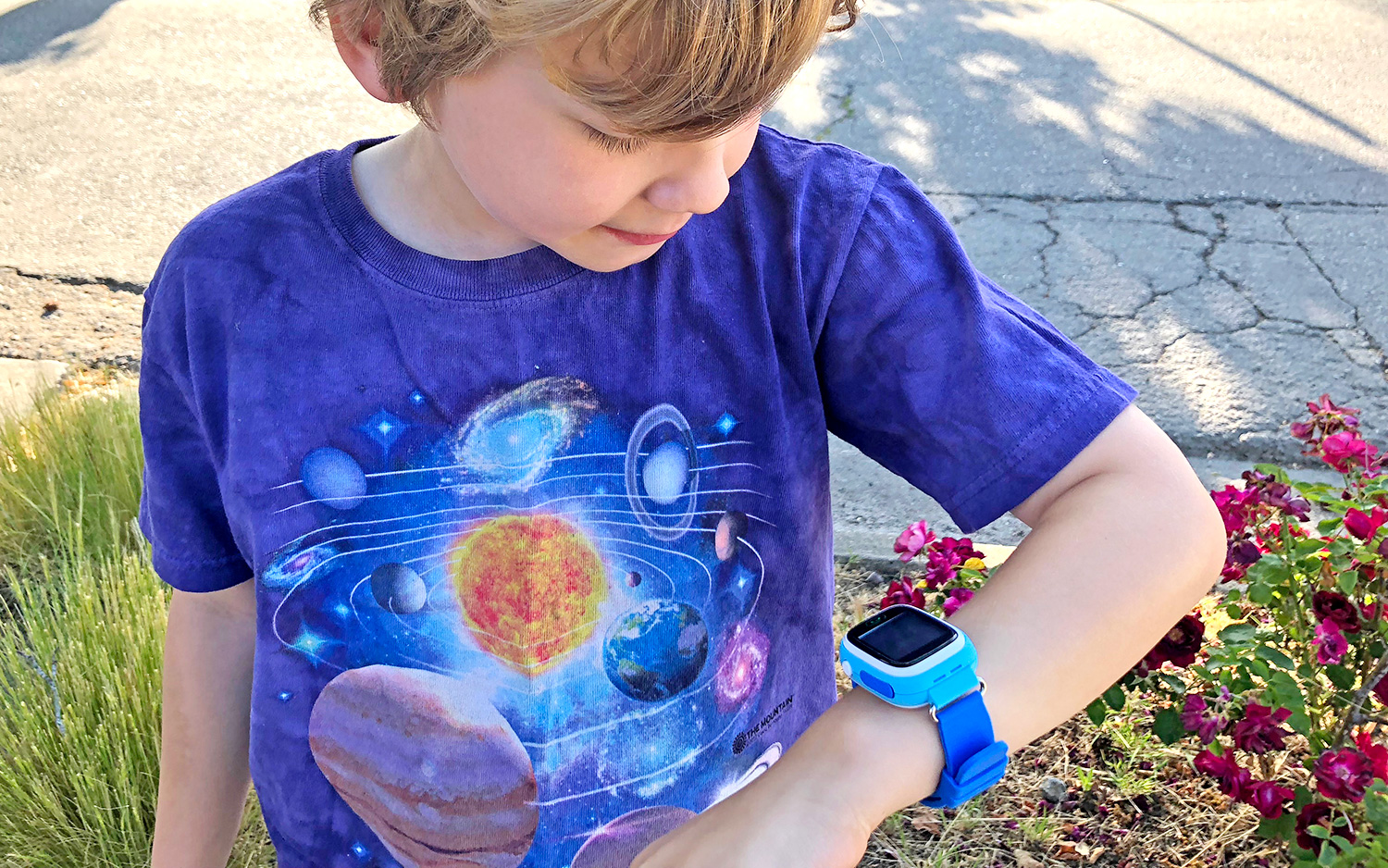
The Lil Tracker stands out from other trackers with its two- and one-way calling. For two-way calls, you call the watch from the app on your smartphone; the watch accepts calls only from numbers you've authorized in the app. Kids can call those approved contacts too, by swiping and tapping the touch screen. Holding down the SOS button on the side of the watch will call up to three preprogrammed numbers, in order, until someone answers. (We reviewed the classic version of the Lil Tracker, but there's a waterproof version available for $20 more. As for seniors, there's a $99 version of the watch available in more mature colors.)
Calls between the watch and the app connected quickly in our tests. The sound quality was only so-so, but it was good enough for a quick check-in. The 6-year-old we tested the device with understood his mother just fine over the watch's speaker, but she sometimes had a hard time telling what he was saying when he was outdoors. When he was indoors and speaking right into the watch, the call sounded a lot better.
One-way calls, called "Sound Guardian" in the app's menu, are kind of like the Drop In feature on Amazon Echo devices. Parents use the app to call the watch, and they can hear what's going on around it, but the watch doesn't ring or make any indication that someone is listening in. This worked well: Our 6-year-old's watch called his mother right away, and she could tell he was at school — but he didn't know she was calling, so he didn't say anything to her. The sound quality was only so-so and varied based on ambient noise.
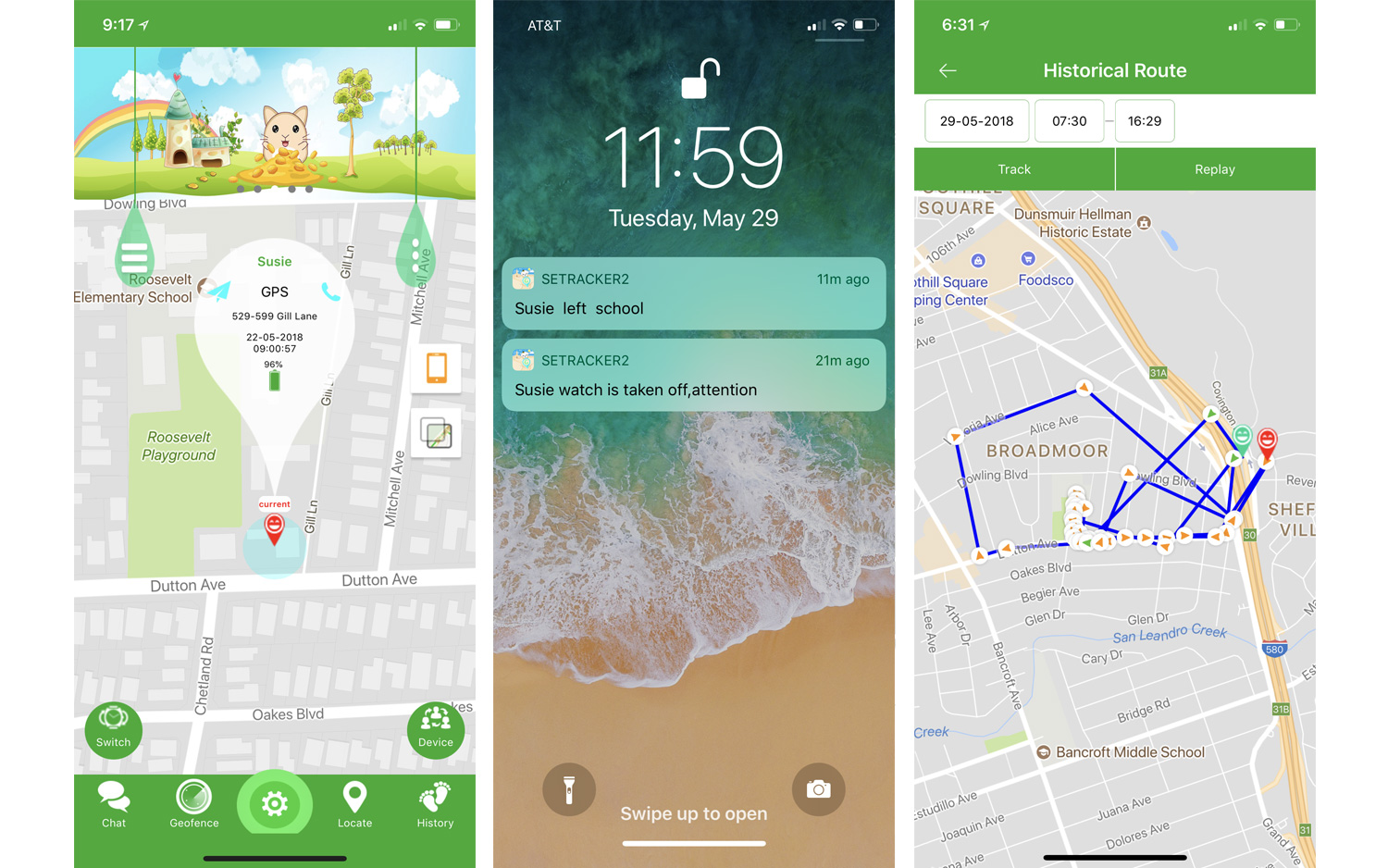
The app (which, weirdly, is called SeTracker2, not Lil Tracker, on iOS and Android) has a lot of other features, too. Some are a lot more important than others. Useful features include the ability to set multiple geofences, track route histories and remove detection alerts (though mine went off when my son took off the watch because his wrist was getting sweaty). The watch can track steps taken and distance, estimate calories burned and count how many times your child turns over in her sleep. (But the watch is pretty bulky to keep on at night, and you need to charge it overnight.) You can send text chats to the watch, including emoji if your child isn't a reader yet. They can't text you back, though.
Unfortunately, the app is riddled with spelling errors and messages that make no sense. (An item called Make Friends brings up a message that reads: "Note: app delete function only for friends to pay a single friend devices; devices can cross multiple friends need to device the end delete." Huh?) Time zone selection is confusing, as you have to calculate how far away you are from Greenwich Mean Time. And the app's main screen has a decorative banner above the map that flips through five images that don't add anything to the app — they're just distracting. Worse, though, is that the app often displays an actual full-screen ad upon launching, even if you're launching it by tapping a push notification.
When we reviewed Lil Tracker, the company didn't offer a package that included a SIM card or service for customers. That means you shop around for cheap service or turn to your carrier to add a connected device to your current wireless plan. That provides flexibility, but it also places the burden on you.
The Lil Tracker watch is passable — and affordable — but the app is disappointing and hampers the experience. It's too bad, because with an all-new app, the Lil Tracker would be a contender for the best GPS tracker for kids. The one-way calling, which lets you listen in on what's happening around your child, is a compelling feature for parents who want to know more than the kid's location.
Best GPS tracker for older kids
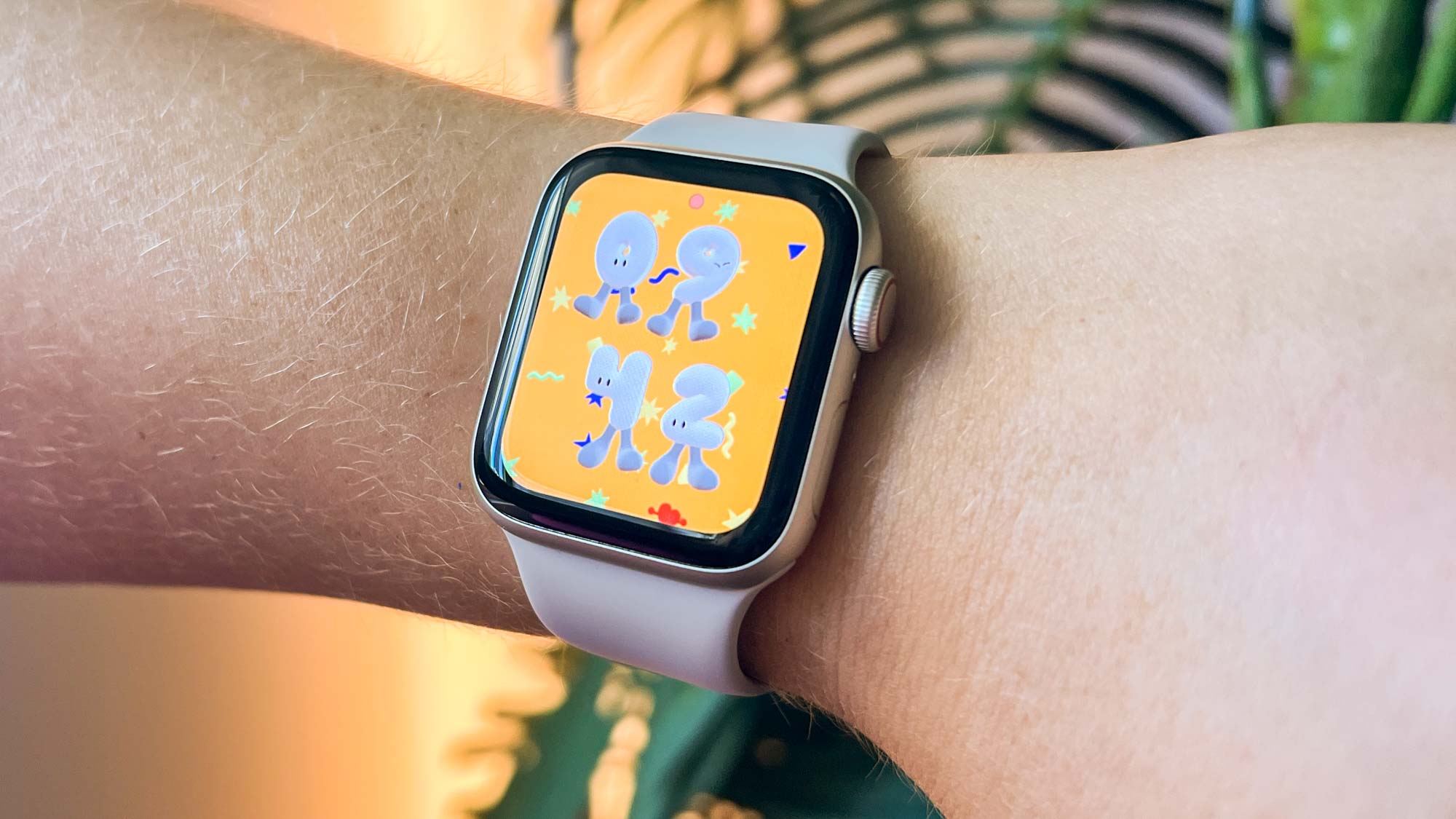
Specifications
Reasons to buy
Reasons to avoid
This fall's Apple product event may have come and gone without an Apple Watch SE 3 — the only entirely new smartwatch coming out of Cupertino is the Apple Watch 10 — but that doesn't mean you should overlook the 2022 edition of the Apple Watch SE. Yes, this entry-level Apple Watch is a smartwatch first and foremost, but it's very easy to use as a GPS tracker for kids.
Turn to Apple's Family Setup feature, and you can manage the Apple Watch SE for another person — a child, say, or even older parent. That lets you monitor locations from afar, and if you buy the cellular version of the watch, your child will be able to send texts and make calls, whether it's to check in or ask for help in an emergency.
For that reason, we think the Apple Watch SE is one of the best GPS trackers for kids, particularly if you want tweens and teens to stay in contact with you.
The 2022 version of the Apple Watch SE is powered by the same updated processor introduced with the Apple Watch Series 8. And the SE mirrors other Apple Watch 8 features as well including crash detection where the watch can determine you've been in a crash, notifying both emergency services and your contacts.
As with previous watches, the Apple Watch SE can deliver 18 hours of battery life, which should let your child get through the day before needing to recharge at night. For those times when you need to squeeze out more battery life, a low-power mode turns off power-draining features. In our testing, low-power mode allowed us to get more than 24 hours of use out of the Apple Watch SE. That gets the Apple Watch SE's battery performance a lot closer to that of a dedicated GPS tracker for kids.
The arrival of the watchOS 11 update brings a new feature parents will appreciate — a Check In capability that sends automatic alerts when the person wearing an Apple Watch arrives at specific locations. (Ideal, if your kids occasionally — or frequently — forget to text that they're home.) Kids will appreciate the new watchfaces in watchOS 11, too.
The Apple Watch SE isn't affected by the patent dispute over a blood oxygen monitoring feature since it never had that capability. So you can buy this device with confidence that it won't be impacted by any legal wrangling. We don't expect a new version of the Apple Watch SE to arrive until 2025, so you can buy this model now without fear that it will become immediately obsolete.
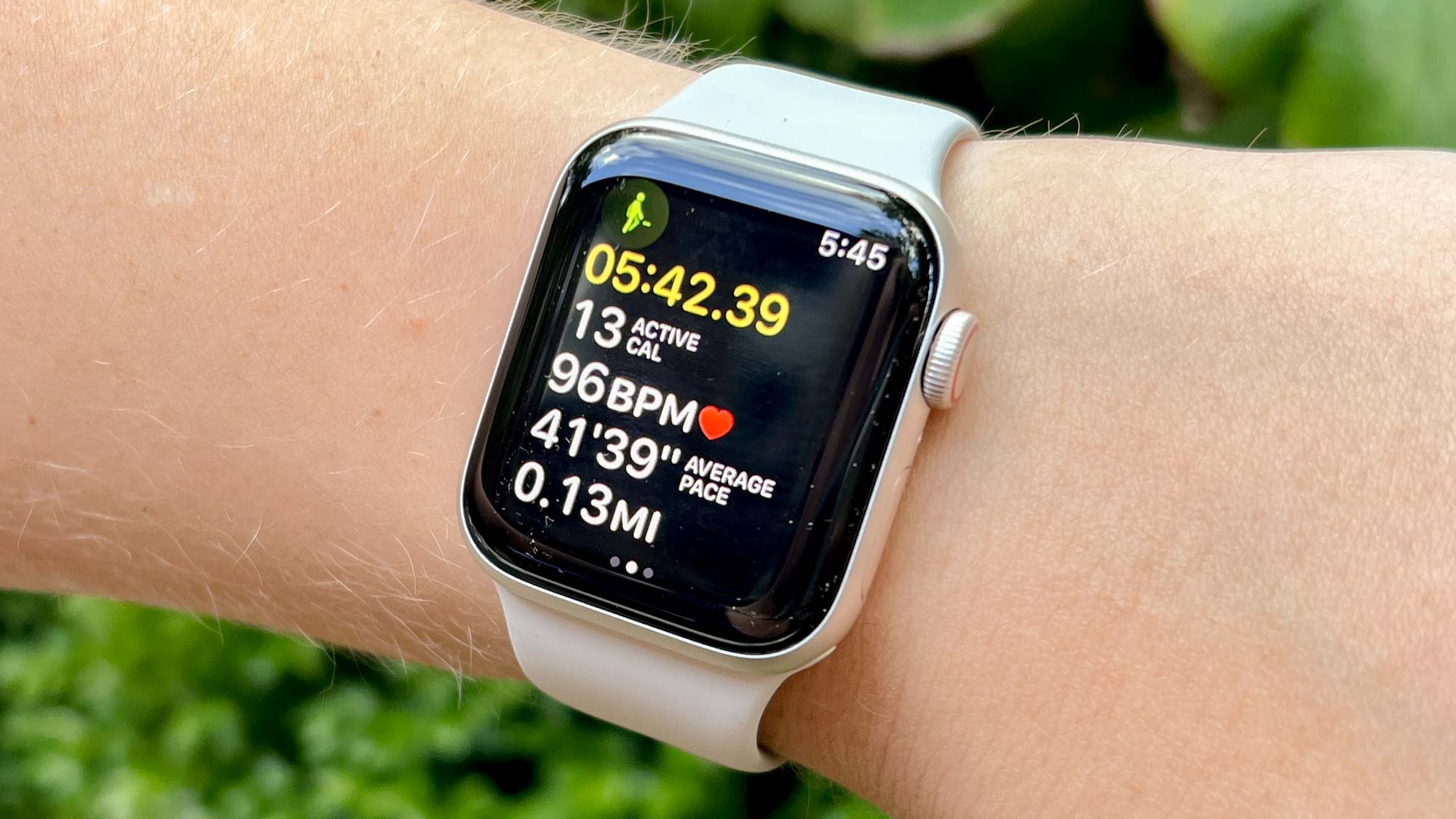
The Apple Watch SE costs less than other versions of Apple's smartwatch, with cellular-equipped version of the SE starting at $299. With the best Apple Watch deals, you can likely pick up an Apple Watch SE for even less, particularly around the end of the year, thanks to holiday sales.
That said, the Apple Watch SE won't be an ideal solution for everyone who just wants basic tracking features. But for older kids who balk at some of the less sophisticated looks of dedicated trackers or for older parents who need to be monitored, the Apple Watch SE (2022) delivers a nice blend of fashion and functionality.
Read our full Apple Watch SE (2022) review.
A fitness tracker with location features
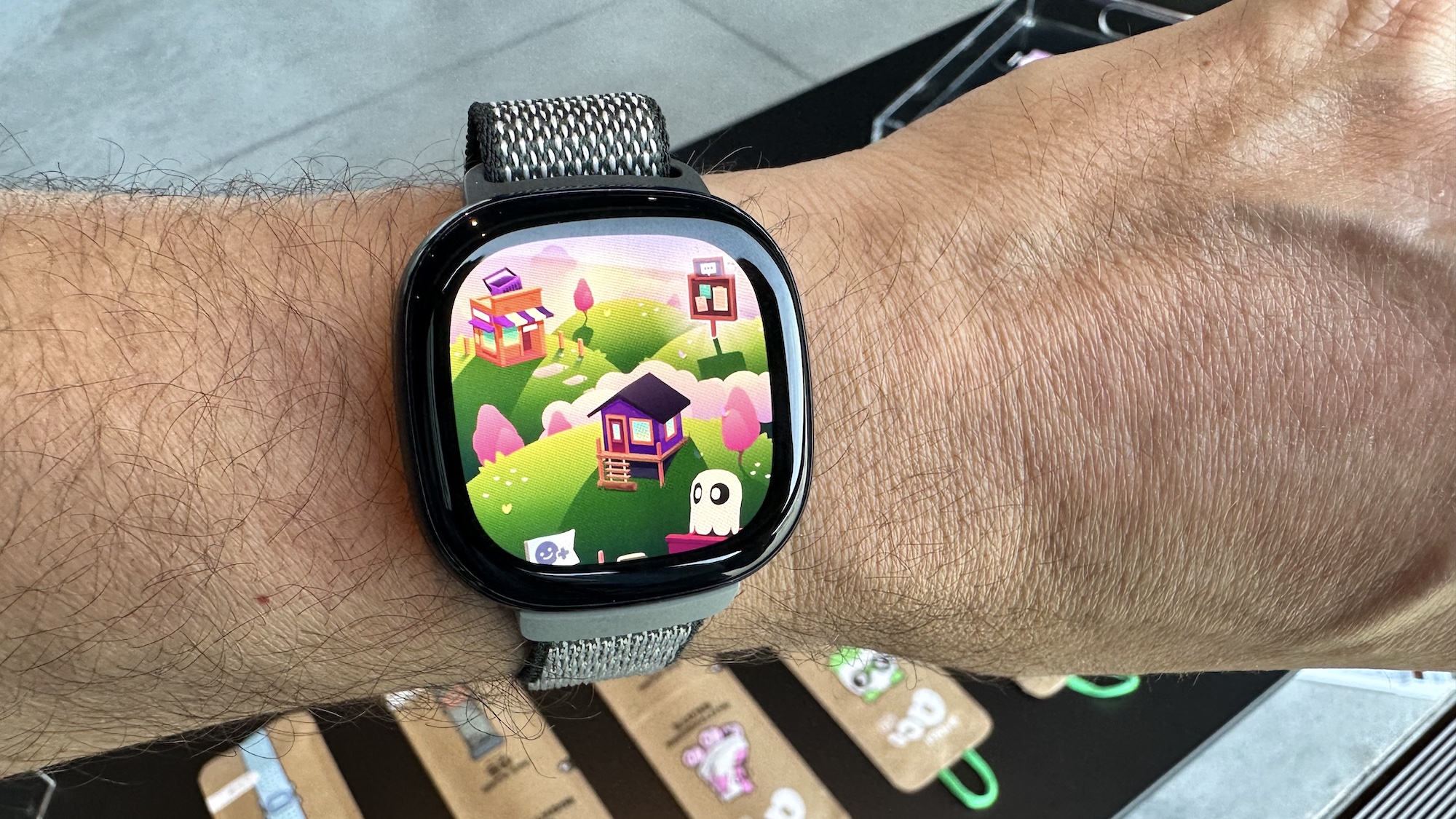
Specifications
Reasons to buy
Reasons to avoid
Like the Apple Watch SE, the Fitbit ACE LTE is designed for purposes other than tracking your kid's location — in this case, it's a fitness tracker. But location tracking is very much part of the Fitbit Ace's feature set.
Specifically, parents can set up this watch-like fitness tracker to track a child's location using the Fitbit Ace app on an either an Android device or iPhone. Parental control features include a School Time setting, which puts limitations on what your kids can do with the device, so that they're not distracted in school.
Because the Fitbit Ace has LTE connectivity, your kid can contact you, either by calling from the tracker or by sending a text message. It's also possible for them to record audio messages that you'll receive in the Fitbit Ace app.
We've only spent some hands-on time with the Fitbit Ace and haven't done a full review, so we can't speak to how accurate its location tracking abilities are. But the $229 device does sound like a viable alternative to the Apple Watch SE, as it also happens to be cheaper than Apple's entry-level smartwatch. You will need to have a $9.99/month subscription to use the Fitbit Ace LTE, though.

Fitbit certainly designed the Ace LTE with kids in mind. The rounded watch has a colorful interface, with a Tamagochi-like avatar for kids to play with and a few on-device games. But it's all designed to keep kids active, as unlocking 15 minutes of playtime requires 60 minutes of physical activity.
The Fitbit Ace offers a rugged design that uses Gorilla Glass 3 and offers water resistance up to 50 meters, so it's likely to withstand any bumps, bruises and splashes that your kid throws at it. At 40mm, the watchface looks a little bit large on a child's wrist, though interchangeable rubber straps offers a degree of customization. Fitbit says you get around 16 hours of battery life, so you'll have to recharge the Ace overnight.
We'll need to test all of those features more thoroughly before we can definitively recommend the Fitbit Ace LTE, either as a fitness tracker or as an alternative location tracker. But if you have the dual goals of keeping tabs on your child while getting them moving, this device certainly can address both of those needs.
Read our Fitbit ACE LTE hands-on.
Also under consideration
Some times, Tom's Guide editors are briefed on promising products that we haven't had a chance to completely review or at least spend some hands-on time with. Still, we want to let you know about GPS trackers for kids that are on our radar, and that we plan to test soon. Here's what's caught our attention lately.
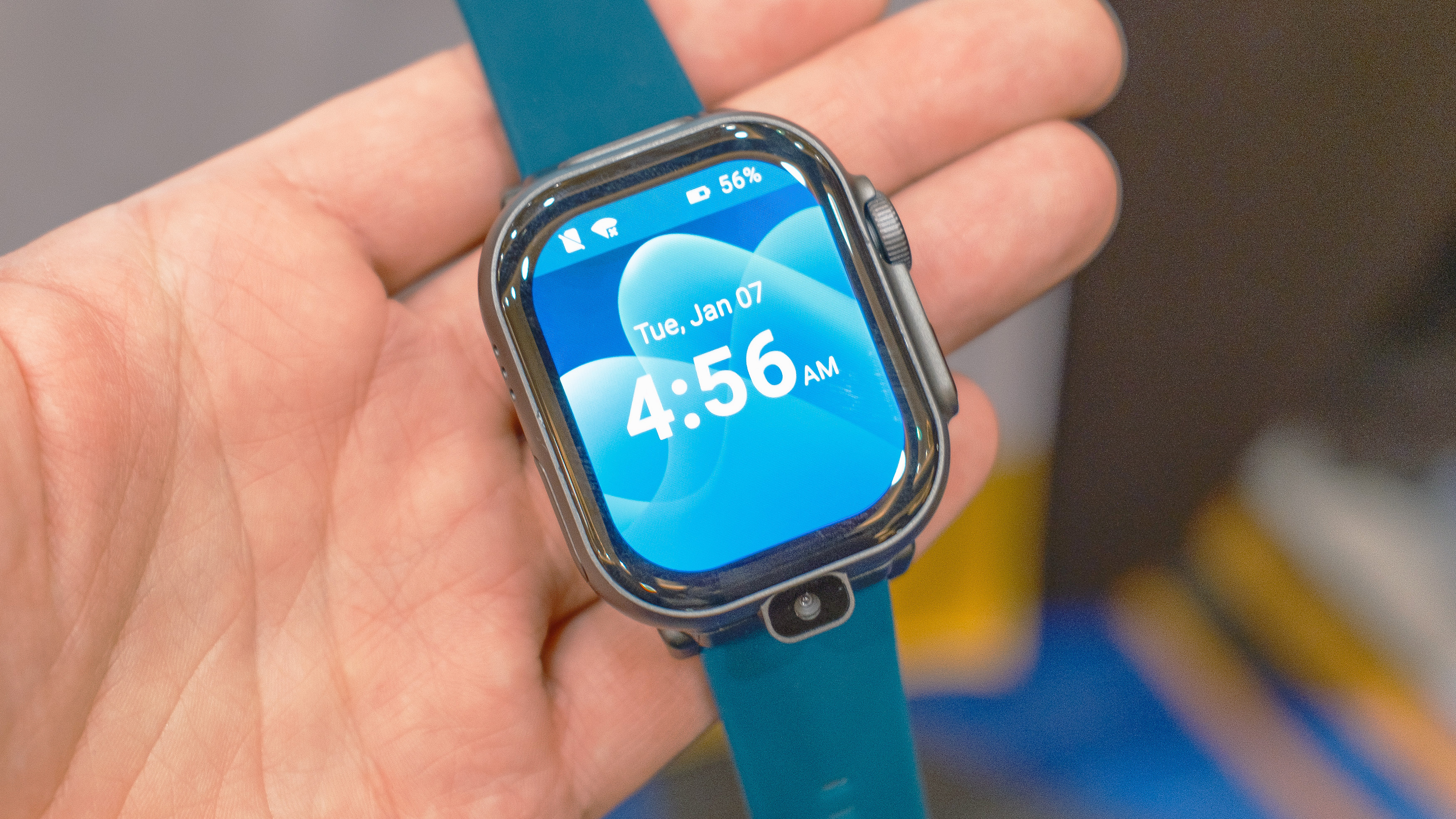
As part of the Tom's Guide blanket coverage at CES 2025 in January, my colleague Dan Bracaglia spotted the new Pinwheel kid's smartwatch — a kid-centric wearable offering some of the same features the Apple Watch SE and Fitbit Ace LTE. At $159, the Pinwheel smartwatch beats the Fitbit by around $70, though its $15/month service fee is $5 more expensive than what Fitbit charges.
It's the parent controls aspect of the Pinwheel watch that piqued my interest when hearing Dan's report. You've got GPS tracking features as well as a geofence capability that lets you know when your child's left a preset area. There's two-way calling through the watch — including video controlling — and parents can control which phone numbers can get through. Any SMS messages sent to the watch are also readable remotely through the Pinwheel app for an extra level of parental supervision.
Another impressive thing about the Pinwheel watch is how much it looks like a device that would be at home on anyone's wrist. There are some colorful wristbands to give the Pinwheel a kid friendly flair, and the apps — which parents can control — are clearly aimed at kids. But everyone will appreciate the durability that IP67 dust and water resistance rating that suggests the Pinwheel can take some degree of wear and tear.
We're looking forward to getting our hands on the Pinwheel smartwatch when it ships in March. Interested parents can add their name to a waitlist to find out when the Pinwheel Kid's Watch is available.
How to choose the best GPS tracker for kids
Here are the criteria we consider when determining the best GPS tracker for kids.
Features: In addition to tracking location, many GPS devices offer a multitude of features, including one- and two-way calling and the ability to set up geofenced zones that alert you when your child has left a designated area. We look at which devices went beyond the basics and how those features were implemented.
Performance: You want a GPS tracker that accurately displays a person's location, with frequent updates when he or she is on the move. We took note of how accurately each device pinpointed our location. We've found that generally trackers work better in wide-open locations, with less accurate signals when we tested in dense downtown areas.
Design: We considered the size of the GPS tracker and whether it was something a child could easily carry around. We also looked at durability: Could the device withstand rough-and-tumble trips to the playground?
Ease of use: We wanted to find devices that were easy enough for a small child to use, certainly, but also ones that wouldn't give mom or dad fits during the setup and activation process. Here's one universal tip: Make sure to activate your GPS tracker in as wide of an open space as possible — not from inside a building. Trackers hate being enclosed, especially at the beginning.
Price: In addition to paying up front for a GPS tracker, there are monthly service fees. We considered what each GPS tracker will cost you on a monthly basis and whether you're required to sign a service contract. We also note when GPS trackers include the cost of service in the initial price tag, such as offering the first year of service for free.
Security: Check what security protocols your GPS tracker follows. And when setting up the device, make sure to change any default passwords or user names.
How we test GPS trackers for kids
In the past few years, we've tested a half-dozen kid-friendly GPS trackers; initially we also tested alongside a trio of generic GPS trackers. (Some of the kid trackers we initially tested are no longer available, as they relied on AT&T's since-discontinued 2G network; we've removed reviews of those products from this guide for the best GPS tracker for kids.) We conducted tests in both New York and the San Francisco Bay Area, using trackers to follow young children both from afar and to find them in a crowd.
To see what each tracker offers, we enable all push notifications and test all voice features, except for ones that would trigger 911 emergency calls. We also keep an eye on how the batteries in each device held up as we traveled from spot to spot.
We go through the companion apps for each tracker, taking note of the features that are available and testing them with the GPS tracker itself. We also research the monthly service cost for each tracker we review.
GPS trackers for seniors and pets
Kids aren't the only members of your family that you may want to keep tabs on. Trackers can also help you be aware of where seniors and pets are. And as you might imagine, the companies that make the best GPS trackers for kids also have devices better suited for older members of the family or pets that might run off.
In the case of Jiobit's tracker — both the original version and subsequent releases — it looks neutral enough so that either kids or grandparents can wear it without standing out, and so Jiobit sells the same device at the same price for people of all ages. For pets, Jiobit includes a fabric pouch attachment that can fasten onto a pet collar, but the tracker and service plan cost the same.
As noted above, Lil Tracker's watch for seniors comes in a more conservative black color and costs a little more than the version for children, at least for the 2G version of the tracker. 4G Lil Tracker watches costs $129 for seniors and children alike. The company has a version of its tracker for pets, but it's listed as sold out as of this writing.
The Apple Watch SE (2022) has a stylish design that appeals to seniors, and the LTE version of that smartwatch costs the same no matter who's wearing it. The Fitbit Ace LTE is strictly designed for kids; seniors won't appreciate the kid-friendly apps or the look of the device.
If you're interested in reviews of dedicated products for pets, our sister site PetsRadar looks at the best pet trackers for cats and dogs.
Sign up to get the BEST of Tom's Guide direct to your inbox.
Get instant access to breaking news, the hottest reviews, great deals and helpful tips.
Philip Michaels is a Managing Editor at Tom's Guide. He's been covering personal technology since 1999 and was in the building when Steve Jobs showed off the iPhone for the first time. He's been evaluating smartphones since that first iPhone debuted in 2007, and he's been following phone carriers and smartphone plans since 2015. He has strong opinions about Apple, the Oakland Athletics, old movies and proper butchery techniques. Follow him at @PhilipMichaels.

